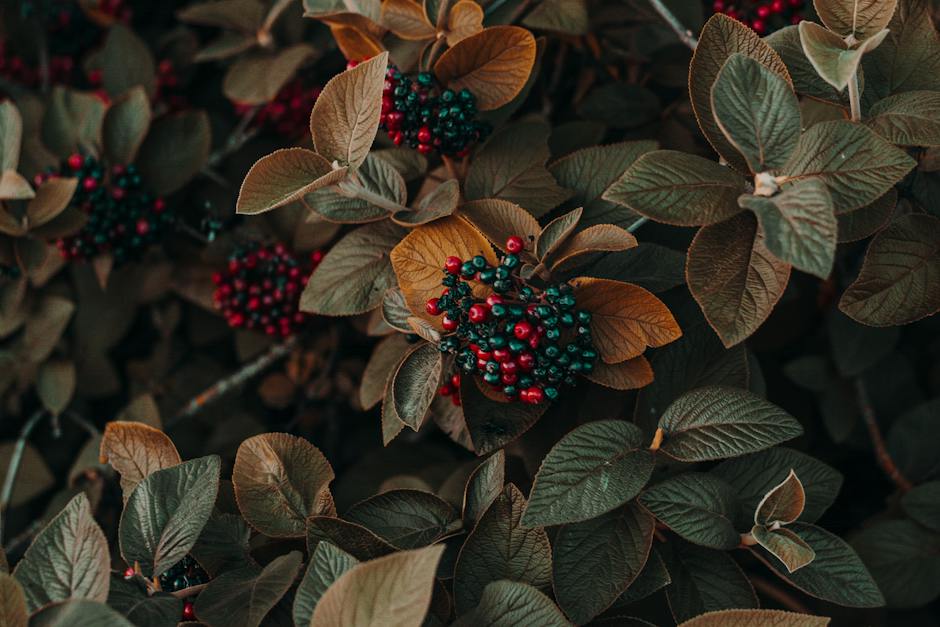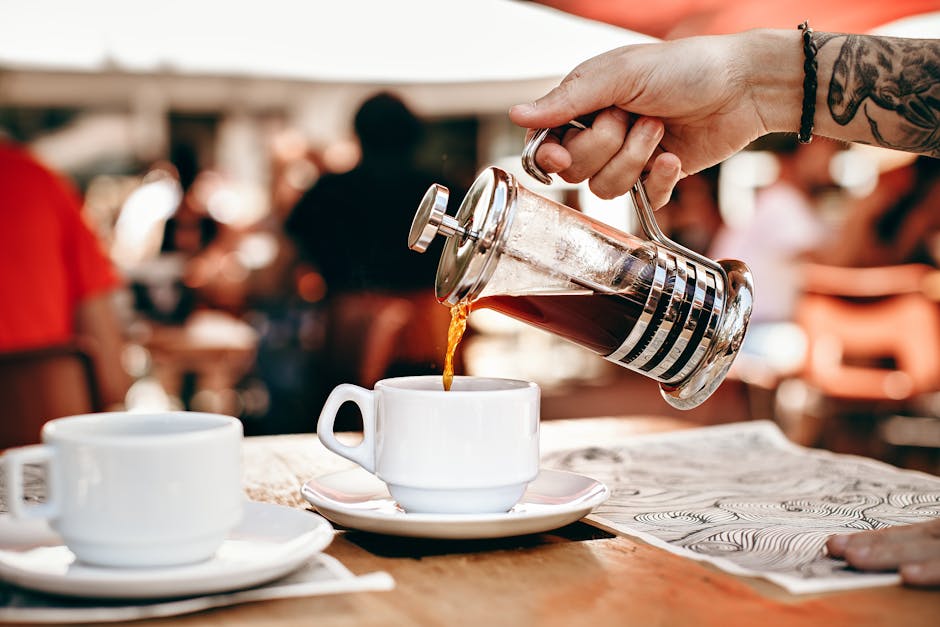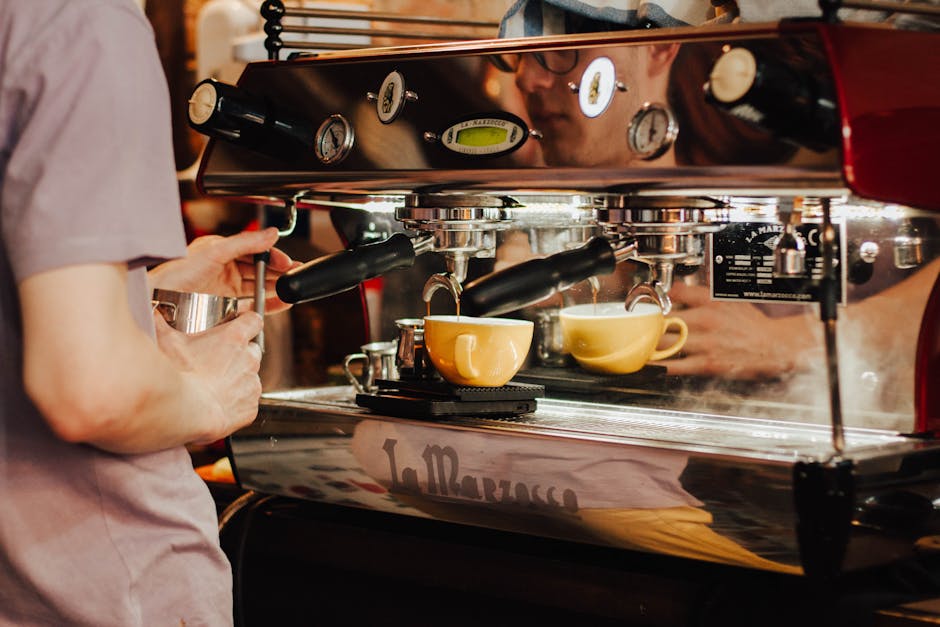Four factors that determine the acidity of coffee


“Like the terroir of wine, it is a harmony between the origin of the coffee and its processing that determines the dance between coffee and acidity, creating a symphony of flavors in each cup.”
When coffee talks: understanding acidity
Have you ever taken a sip of coffee and felt an exuberant experience that makes your taste buds dance? This article dives into this very phenomenon: the acidity of coffee. We will explore what factors create this distinctive flavor nuance. Is coffee acidic or just elusively sour? We’ll help you recognize and appreciate a tart flavor profile in your next cup of coffee.
The origin of the taste: the role of the coffee variety
Not all coffee beans are created equal – they have a history, a place they call home, and this plays a big part in that acidity we’re talking about. Let’s start by understanding how the acidity in your particular cup of coffee started its journey.
The mountain and the shade – an acidic combination
In the shady slopes of the high mountains, coffee varieties with a sour taste are often found. This is where factors such as altitude and shady plantations come into play, like venues on a stage of flavors. Shade-grown coffee plants and high altitude plantations tend to offer higher levels of chlorogenic acid, citric acid, malic acid, and phosphoric acid, all contributors to coffee acidity. When we compare Arabica and Robusta, it’s like comparing a finely tuned violin to a sturdy drum – Arabica often offers a higher and more seductive acidity compared to Robusta’s more powerful, but less acidic, flavor.
From flower to prayer – the impact of fruit formation
From delicate flowers to juicy berries, the fruit of the coffee is smoothly phased into the final bean form. During this metamorphosis, conditions play a crucial role; humidity, temperature, and the management of the coffee farm can ultimately enhance or dampen the acidity of your morning brew.
More than just a coffee bean: the effects of processing
Processing the coffee bean is the next big step in our delicate dance with acid. It is during this phase that the innermost essences of the coffee berry decide to stay or to flee.
Once harvested, coffee berries are faced with a choice: to be washed, semi-washed, or to dry in the sun. Washed coffee, which undergoes a process of pulping followed by soaking, is a real acid bomb in the flavor profile. It is during these practices that the final acidity level of the coffee bean can be refined and shaped. Each technique has its own enchanting effect on the acidity that we then taste in our coffee.
Sun-drying and washing are like different choreographies for the final flavor presentation of the coffee bean. It is during these procedures that we can adjust the steps that characterize the acidity levels of a cup of coffee. With these methods, we can expect the acidity of a bean to be more pronounced or subtle in the final beverage.
The heat of coffee: the art of roasting
While the beans take their place in the hot roaster, the penultimate act of our acidity journey is underway. Roasting can bring acidity to life or let it settle – let’s explore how it works.
Bright is right for acidity
Light brings life and this also applies to coffee roasting. Light roasting brings out the acidity and evokes flavors that can be described as sharp and almost like the citrus notes we recognize. This light roasting process preserves many of the acids such as malic acid, making light roasted beans much loved among coffee enthusiasts who appreciate a lively and tart cup.
In the hands of the brewer: brewing and taste
Brewing – the final touch where you, as a coffee artist, can paint the picture of acidity in your cup. By fine-tuning the temperature, time, and grind, you have the power to bring out or soften the acidity of the coffee.
Once you’ve brewed your coffee and let it cool down, you’ll notice how the acidity can come out and take over. Temperature plays a major role in the flavor profile of coffee, and the change that occurs as the coffee cools is crucial to the intensity of its acidity. With the right brewing temperature and controlled cooling, you can decide for yourself how much of this flavor dimension you want to offer your taste buds.
The secret of the balanced cup
Looking for balance in your cup? Brewing time and grinding degree are like a duo that, when dancing in perfect harmony, give a cup of coffee its balanced character. To capture your desired level of acidity, try playing around with these factors – a fine grind can enhance acidity while a longer brew time can make the cup’s flavor profile rounder and more complete.
Softer cup with the magic of milk
If you find that your cup is a little too sour or bitter, a splash of milk can be a lifesaver. A splash of milk can smooth out the sharp edges and give your drink a creamier and milder character. It’s a welcome gesture that balances the flavor and will make you look at your cup of coffee with new, loving eyes.
Summarizing the buzz of acidity
Through this deep dive into the acidic world of coffee, we have explored how factors such as cultivation, processing, roasting and brewing individually and together create and influence acidity. There are many ways to influence the taste of coffee, and the fascination with coffee and acidity is shared by many. Now I hope you feel inspired to experiment and share your own experiences. What dance with acidity will you perform in your cup tomorrow?

FAQ – Four factors that determine the acidity of coffee
How do growing conditions affect the acidity of coffee?
Growing conditions, such as altitude and whether the plant is shade-grown, directly affect the levels of organic acids in the coffee. Shade-grown coffee plants and plants grown at higher altitudes tend to have higher levels of chlorogenic, citric, malic and phosphoric acids, which contribute to a distinct acidity in the flavor.
Why does washed coffee have a higher acidity?
Washed coffee that has undergone a process of pulping and soaking the beans retains a high acidity in the flavor profile. This is because the washing process preserves the acids responsible for the acidic character of the coffee by reducing the interaction with the pulp during drying.
How does the degree of roasting change the acidity of coffee?
The degree of roasting has a decisive impact on the acidity level of the coffee. Light roasting brings out the acidity and characteristic flavors, such as citrus notes, which can often be attributed to the presence of malic acid. Darker roasts can reduce acidity and promote other flavor profiles, such as bitterness and sweetness.
Why does the acidity of coffee increase as it cools?
As the coffee cools, the acidity may become more prominent as the fresh acidic flavors become more apparent at lower temperatures. This means that the acidity of the coffee can be perceived as stronger and more intense compared to when the coffee is hot.
Can grinding degree and brewing time affect the acidity of coffee?
Yes, milling degree and brewing time are two factors that influence the extraction of flavors and acids during the brewing process. A finer grind can lead to faster extraction and more acidity, while a longer brewing time can result in a more rounded and balanced flavor profile where acidity is more integrated and less prominent.

Photo by Irina Iriser on Pexels
Photo by Caio on Pexels
Photo by Ann poan on Pexels
Continue reading
-

Pregnant and decaffeinated: safe for you and the baby?
“Decaf during pregnancy: A safe guide for expectant mothers” Decaffeination during pregnancy is an important issue for many. Pregnancy affects the body’s ability to break…
-

Coffee and health: anti-inflammatory or villain?
**Coffee and Inflammation: A Complex Relationship** Coffee is one of the world’s most widely consumed beverages and contains antioxidants that can reduce inflammation and protect…
-

Coffee and weight – are you getting the balance right?
Coffee and weight – Find your edge without tipping the scales Coffee and weight is a hot topic in health. Black coffee, with its low…
-

The truth about decaf – is it really good?
The truth about decaffeinated coffee: Is decaffeinated coffee good for you? Decaffeinated coffee is a healthy option for those who want to avoid the negative…
-

Coffee acidity: health and taste perception
The acidity of the coffee is influenced by its pH value, which is between 4.85 and 5.10. Is coffee sour? Yes, and this is due…
-

Pre-exercise coffee – does performance increase with each cup?
Drinking coffee before exercise can improve both strength and endurance, thanks to the stimulating effects of caffeine on the central nervous system. For best results,…
-

Coffee and antioxidants: your healthy cup?
**Coffee and antioxidants: a healthy cup Coffee is one of the major sources of antioxidants in Western diets, which can help reduce the risk of…
-

Turmeric in coffee – a health boost in your cup
Turmeric in coffee has become a popular trend among health enthusiasts thanks to its anti-inflammatory and antioxidant properties. Adding turmeric to your coffee can improve…
-

Roast for body in the coffee
Body in coffee refers to the fullness and mouthfeel of the coffee. It is influenced by brewing methods such as French press and espresso, as…
-

The role of coffee in the quest for a longer life
Coffee is a popular morning ritual that not only increases alertness but also contributes to a longer life. Studies show that coffee, rich in antioxidants,…
-

Coffee and health: upgrading your coffee with superfoods
**Coffee and Health: Upgrade your coffee with superfoods** Give your coffee a health boost by adding superfoods such as cinnamon, ginger, mushrooms, turmeric, maca and…
-

Is coffee dehydrating or hydrating?
**Is coffee dehydrating or hydrating? Coffee is one of the world’s most loved drinks, but is it dehydrating? Research shows that moderate coffee consumption (1-2…
-

Enjoy and feel better: 9 unexpected benefits of coffee
**Your health in a coffee cup: Benefits of coffee** Coffee, a global favorite beverage, offers many health benefits that are often overlooked. In addition to…
-

Taste guide: Detecting roasting defects in your coffee cup
Detect roasting defects in the coffee cup and improve the taste experience of the coffee. Learn to identify common defects such as underdevelopment, baked taste,…
-

The home roaster’s guide to the right green coffee
Discover the adventure of green coffee and learn how to roast at home with our comprehensive guide to buying the right green coffee. Understand the…
-

All about how coffee is harvested
A journey through the coffee harvest describes in detail how coffee is harvested, from ripe coffee berries to finished beverage. Harvesting is mainly done by…
-

Exploring third wave coffee
**From the origin of the bean to your coffee barrel: A journey with third wave coffee** The coffee industry is a global giant, covering everything…
-

Coffee with balance: decaf vs low-caf
Low-caf coffee offers a balanced solution for coffee lovers who want to avoid the negative effects of caffeine. While traditional coffee and decaf often have…
-

How to turn coffee beans into decaffeinated coffee
### How to turn coffee beans into decaffeinated coffee Decaffeinated coffee, or decaffeinated coffee, removes the majority of caffeine from the beans to avoid negative…
-

Refine your brewing art by blooming your pour over coffee
Optimize the taste of your coffee with the art of bloom pour over coffee. Flowering of coffee is a crucial step to release gases and…
-

Create a unique brand for your café – here’s how!
Creating a strong café brand means defining your ‘why’ and mission to stand out from the crowd. By integrating core values like sustainability and community…
-

Should I use different coffee filters for different roasting profiles?
Discover how coffee filters affect the taste experience! Using the right coffee filter is essential to bring out the unique flavors of each coffee variety.…
-

How to make an espresso martini at home
“Create the perfect espresso martini at home with simple ingredients like vodka, coffee liqueur, fresh espresso and simple syrup. Rooted in 1980s London, this classic…
-

Lungo: when espresso takes a bigger leap
Lungo is a coffee drink that is gaining ground in Sweden, a milder espresso with extended brewing time that provides a larger amount of coffee…
-

The charms of the Perculator – a coffee experience like no other
Experience the rich flavor of percolator coffee, a traditional brewing method that offers depth and complexity. The perculator is quick and easy, perfect for busy…
-

Do you know the coffee berry?
Discover the importance of coffee berries in the coffee flavor journey, from lush plantations to your cup. Learn about the different layers of the berry,…
-

Headache from coffee: 6 unexpected reasons
Discover the causes of coffee headaches, from caffeine withdrawal to overdose and caffeine allergy. Coffee can cause both concentration and headaches, with withdrawal symptoms and…
-

How to use different cups for different coffees
Discover how cups for coffee can change your taste experience. Research shows that the shape of the cup affects the aroma, sweetness and acidity of…
-

Arabica coffee beans – a world of flavor variations
Arabica coffee beans offer coffee lovers a wealth of flavors thanks to its diverse varieties such as Bourbon, Typica and Geisha. These beans, which dominate…
-

Flavor development during roasting: the magic of the griddle effect
The grinding effect is central to the transformation of the coffee bean during roasting, creating hundreds of aroma compounds that make the coffee rich and…
-

Top tips for making French press coffee
Discover the art of brewing perfect French press coffee by selecting fresh coffee beans, achieving the ideal grind and balancing the coffee-water ratio for a…
-

Attracting more café guests – your guide to a vibrant meeting place
Welcome all café guests to a place where the details create a unique atmosphere. To successfully attract visitors, cafés should strengthen their digital presence and…
-

Coffee giant Brazil: a deep dive into the kaleidoscope of culture
Brazil is not only known for its culture of music and carnival, but it is also a global coffee giant whose coffee traditions go back…
-

Clean your coffee grinder like a pro – for flavor
Regular cleaning of the coffee grinder is essential for an optimal coffee experience. An unclean grinder negatively affects the taste through the accumulation of old…
-

Flat white – more than just milk and coffee
More than just milk and coffee, flat white is a global coffee experience that originated in Australia and New Zealand, and has captured the hearts…
-

Ristretto – Italy’s flavorful little guy
In Italy, ristretto is more than just coffee; it is a concentrated pleasure and part of the culture. This intense espresso variant is characterized by…
-

Storing coffee beans properly: guide and tips
Learn how to store coffee beans optimally to preserve flavor and freshness. Avoid air, moisture, heat and light with airtight, dark containers and the right…
-

Growing coffee in Uganda: one bean’s journey to perfection
Uganda, a leading coffee producer, offers a wealth of flavors from the nutrient-rich red soil. The country is known for its Arabica and Robusta coffees,…
-

A deep dive into the world’s oldest brewing method
Discover the ancient art of coffee, where traditional tools like the cezve and ibrik represent the oldest brewing method for coffee, a deep-rooted tradition celebrated…
-

How to make cold brew coffee at home
Enjoy a flavorful coffee experience with cold brew coffee, a popular brewing method that produces a mild and low-acid beverage, perfect for hot days. Unlike…
